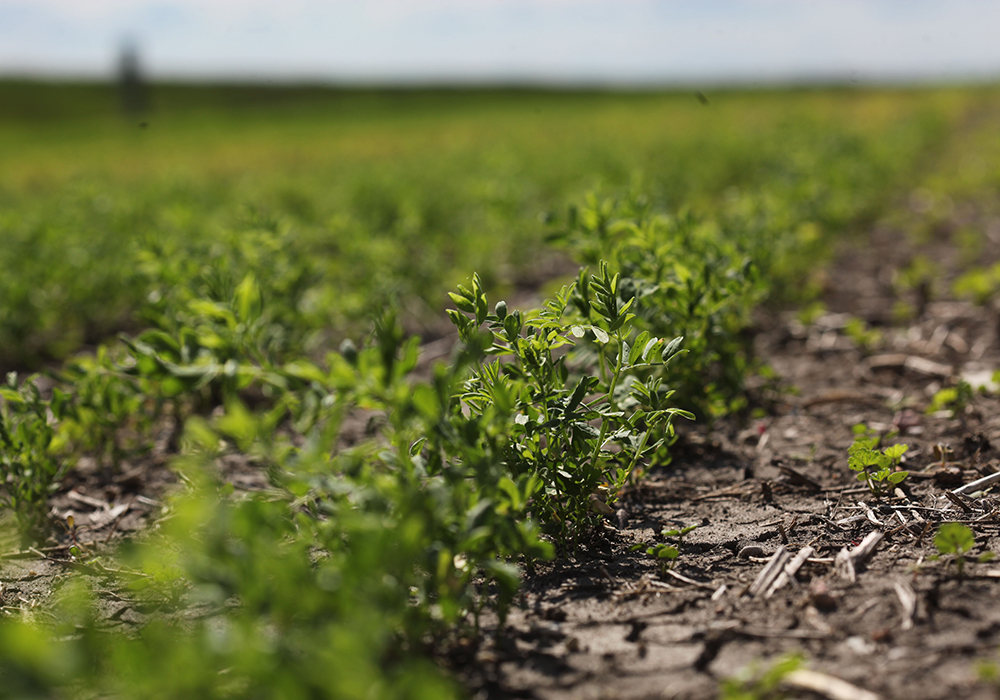Researchers are trying to understand what causes a lentil plant to flower at the time it does in a given environment
Researchers have developed a model to determine which lentil varieties will thrive in new production environments.
It comes at a time when the global appetite for pulses is rising as the effects of global warming and climate change slowly build.
Increasing production of lentil-based protein will have to come by improving yields in traditional growing areas or shifting production to new locations.
“This (research) is primarily looking at expanding genetic diversity,” said Kristin Bett, plant scientist at the University of Saskatchewan.
The University of Saskatchewan’s Crop Development Centre led the three-year trial with other notable crop breeding programs, such as the ICARDA (International Centre for Agricultural Research in the Dry Areas) in Morroco.
Read Also

Pakistan reopens its doors to Canadian canola
Pakistan reopens its doors to Canadian canola after a three-year hiatus.
Bett pointed out it’s not easy to introduce new traits or diversity into future lentil varieties.
“There’s only so much genetic diversity within the Canadian gene pool, so we actually go looking outside and start making crosses with material from other regions,” said Bett.
She said desired diversity can be achieved for something like disease resistance but at the expense of adaption, which ultimately affects plant yield.
“That leads to small plants and reduced yield. So when we cross with that material, the offspring segregate and trying to find the ones that flower at the right time and yield well is a big challenge,” she said.
The researchers are trying to understand what causes a lentil plant to flower at the time it does in a given environment.
The research team planted 324 varieties in nine lentil production areas, which included two in Saskatchewan (Saskatoon and Rosthern), one in the United States, three in the Mediterranean (Morocco, Spain, Italy) and three in South Asia (Nepal, Bangladesh, India).
They compared how lentils varieties grown in Saskatchewan would perform in South Asia, where they can be grown during the winter with less daylight.
“Unlike us in Saskatchewan who end the season with temperatures dropping, they end their season with temperatures going up. So if it doesn’t flower soon enough, the temperature gets crazy hot,” she said.
The Mediterranean region can also grow through the winter with shorter days, but it’s much cooler compared to South Asia.
“So anything that’s interacting with temperature and day length is going to be very delayed. As it turns out Canadian cultivars in those regions are very delayed and in South Asia they often don’t flower or don’t see that set seed,” she said.
While it’s necessary to understand the relationship between flowering and maturity, it’s equally important to appreciate how day length and rising temperatures interact and impact yields before moving into more diverse growing environments.
“Because we had the data from all these different environments and how all these varieties performed, we were able to develop this model for what would happen to these particular lines if temperatures increased by even just a degree and a half,” she said.
For example, even a one to two degree change in the Mediterranean regions significantly delayed flowering.
“And when you leave your crop out in the field, say an extra couple of weeks, that’s an extra couple of weeks for things to go wrong — mostly disease,” she said.
The recently published research findings can be found in the journal Plants, People, Planet, which Bett said will help producers and breeders identity existing varieties or develop new lines.
The new mathematical model uses detailed information about each variety’s interaction with temperature and photoperiod (hours of sunshine) to predict the number of days it takes each variety to flower in a specific environment.
“We have looked at the DNA of all these lines and are starting to associate bits of the genome that are common to those that grow well in Saskatchewan. We can use this information to guide our selection strategies when making crosses with exotic lines to introduce new genetics while making sure the offspring are likely to be adapted to life in a Saskatchewan summer,” she said.
“This will increase our efficiency in developing superior lentil varieties for Saskatchewan farmers.”
Data analysis from the three-year study continues as well as trying to deploy the markers into the breeding program.
An upcoming study will focus on how seed quality is affected by environment.
“We collected the seed from the Mediterranean and Saskatchewan sites and are now looking into how other traits are affected by the differences in growing environment. Traits like seed size, seed coat, cotyledon colour and nutritional characteristics,” she said.
















